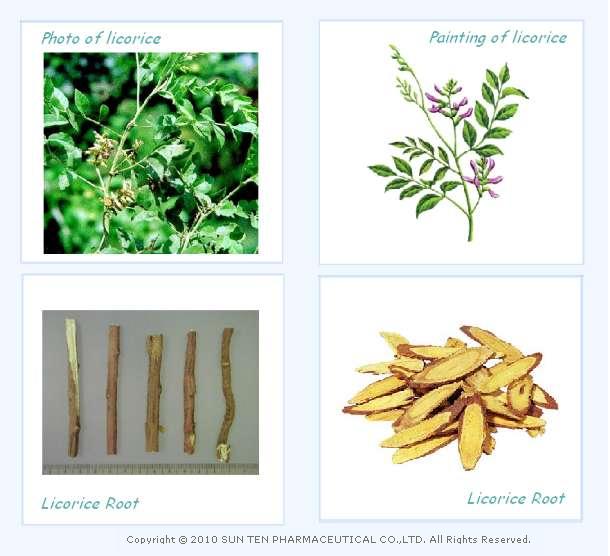Licorice Root (Radix Glycyrrhizae; Gan Cao)
TCM Herbal Story
Once there was an herbalist lived in a remote mountain village in China. One day, while the herbalist was out making house calls, a crowd of patients came to his house seeking treatment. The herbalist's wife saw the number of people waiting, and as the herbalist could not return anytime sooner, she decided to give the patients with the dry herbs stored in the back yard. She looked around and saw a big stack of ¡¥dry hay' (pronounced like ¡¥Gan Cao' in Chinese) in front of the stove. She picked up a piece of the dry hay to taste and found the hay tasted sweet. So she sliced the hay into small slices, and gave them to the patients. She said to the patients, ¡¥these are the herbs used by my husband, decoct these in water, drink the liquid and you will feel better”. All the anxiously waiting patients welcomed the news and left with gratitude.
Few days later, several people returned with gifts to thank the herbalist, they claimed to have recovered after taking the herbs. The herbalist was confused, but his wife knew exactly what had happened, so pulled him aside and told him what she did Realizing what had happened, the herbalist asked what was given and his wife pointed to the stack of hay used for making fire. The herbalist then asked the patients what their symptoms were: some had weakness in the stomach and spleen, some had cough with phlegm, some had sore throat, some had toxic swelling, etc. All symptoms were relieved after taking this ¡¥dry hay (Gan Cao)'.
Since then, the herbalist began to use ¡¥dry hay (Gan Cao)' as a Chinese herb for treating stomach and spleen weakness, poor appetite, abdominal pain, and loose stool. Taken in the raw herb form, Gan Cao can ease sore and swelloen throat, peptic ulcer, abscess and ulcer, food poisoning and also act as an antidote for a number of toxic substances. In addition, Gan Cao is used to moisten the lung and stop coughing with phlegm. Furthermore, the herbalist also used Gan Cao to moderate and harmonize the characteristics of other herbs, so he added 1 qian of Gan Cao to all of his prescriptions. The herbalist later renamed Gan Cao (from dry hay to sweet herb, “dry” and “sweet” sound the same in Chinese) for its sweet taste, and Gan Cao remained a commonly used herb since then.
Licorice root is the dried root and rhizome of Glycyrrhiza uralensis Fisch, from the family of Fabaceae. It is slightly scented and has a sweet taste. It enters mainly the heart, lung, spleen and stomach.
【Gallery of Licorice】

Actions:
Traditionally used to tonify the spleen and qi, clear heat and detoxify, dispel phlegm, suppress cough, relax tension, relieve pain, and harmonize other herbs.
Indications:
In cases of spleen and stomach weakness; tiredness and weakness; cardiac palpitation and shortness of breath; cough with much phlegm; spasmodic pain in the epigastrium, abdomen and limbs; carbuncles and sores, also used for reducing the toxic or radical actions of other durgs.
Cautions:
Not to be used with Radix Euphorbiae Pekinensis, Flos Genkwa, Radix Kansui, and Sargassum.
The original article is from Brion Research Institute, translated by Sun Ten Pharmaceutical Co., Ltd.
For Chinese/original version, please click: